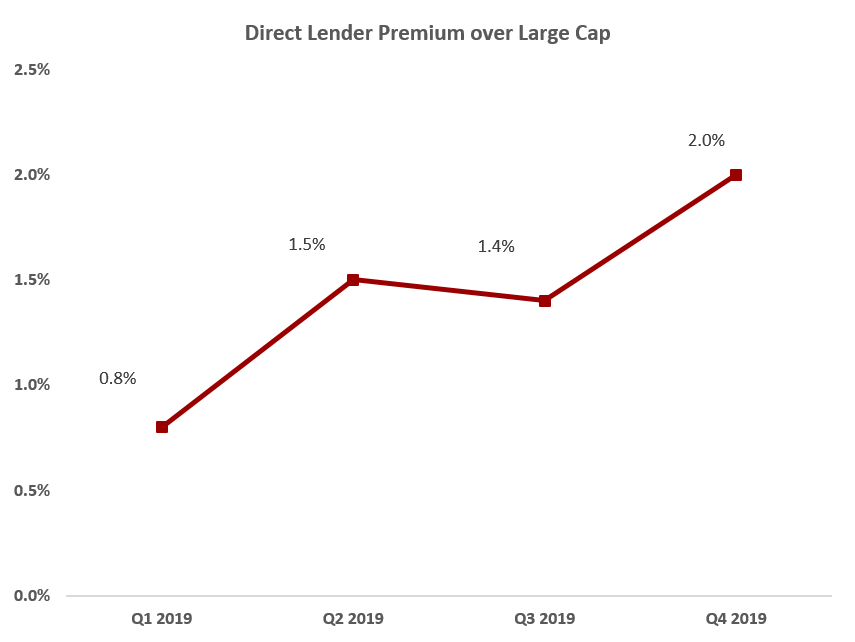March 2020 Debt Capital Markets update

Like many of our colleagues across the industry, the Livingstone team has temporarily relocated to our home offices, dining room tables, and kitchen counters. As has been the case across nearly every industry, the Covid-19 virus pandemic has had an immediate and significant impact on the M&A and financing markets. Livingstone’s debt advisory team has been working to understand the near-term impact on middle-market financing. We have had conversations with lenders, CEOs/CFOs, private equity firms, and our M&A partners and read as many analyses as we can find. The aggregate of that feedback is not surprising with everyone realizing we are in a nearly unprecedented period with perspectives changing daily.
Before jumping into that feedback, it is important to examine the state of the financing markets before the term “coronavirus” dominated our vocabulary. Coming into Q1 2020, middle-market lenders had begun to demonstrate a shift towards higher-quality credits, as many credit committees believed the economy was in the final stages of the 10+ year economic expansion. In Q4 2019, the broadly syndicated market for middle-market loans, typically where the most aggressive financings can be found and, therefore, the first choice of many sponsors, was overshadowed by the direct lending market (non-syndicated loans including senior, senior stretch and unitranche, mezzanine, and private second liens).

As reported by Refinitiv LPC, the ratio of direct lending volume to syndicated market volume in Q4 2019 was the highest on record; indicating sponsors were unable to secure financing in the syndicated market and were required to migrate to the less aggressive direct lending market.
As a result, total leverage for sponsored middle-market deals dropped to 4.75x in Q4 2019, the lowest level seen since Q3 2018. Consistent with this migration towards borrowers with higher credit quality, the yield premium lenders required from middle-market borrowers over large corporate issuers increased to approximately 2% after beginning 2019 at less than 1%. Again, this was all before the current coronavirus situation.

Over the last three weeks, the sentiment in the debt capital markets has certainly worsened. Secondary prices in the broadly syndicated market have fallen to levels last seen in July 2009. As the impact of the virus has become clear, underwriters of syndicated loans in the process of closing financings have been forced to close the transactions, postpone syndication processes, and hold large positions on their balance sheets. Meanwhile, new deal flow has essentially evaporated. Just in the last week, we have heard first-hand accounts of four separate instances of lenders pulling term sheets previously issued in support of acquisition financings.
Perhaps in contrast with the above comments, our conversations with originators at multiple private debt funds and commercial banks have yielded a consistent message – they continue to want to see new opportunities. However, that feedback has been qualified to include: i) the credit bar has been raised even further, ii) borrowers will need to be able to detail the impact of the recent market disruption on their businesses and iii) pricing will be higher and structures and terms will be tighter. On pricing, we have heard Libor margins will increase 50-150 bps as lenders feel they had previously underpriced the risk in the market.
All that notwithstanding, we do believe there are some positive factors at play that will hopefully lessen the impact of this current disruption. Today, private debt funds are sitting on more than $250 billion of committed capital, according to research firm Prequin. Competition to deploy capital has been fierce for the last several years. With that in mind, leaders at private debt firms that lived through the 2008/2009 recession will understand there can be a first-mover advantage for firms that jump up to take risk. Consequently, we expect this competition will eventually accelerate the return of some lenders to the market.
As noted above, early financing structures will be tighter and priced higher but at the first signs of stabilization, lenders will seek to put money to work. Many of these lenders have the ability to underwrite and hold substantial loans, allowing them to proceed based on their own conviction and without the need for club or syndication partners.
Further, the proliferation of firms that raised funds targeting flexible capital solutions (e.g. structured debt, minority or preferred equity, etc.) will view the current market disruption as the perfect opportunity to put their investment thesis to work. Our inboxes have been abuzz with these firms reminding us they can move quickly to fill holes created by the departure of more traditional lenders.
For sponsors with equity capital to deploy or portfolio companies with strong balance sheets, the current market disruption may be an opportunity to buy and build at more attractive valuations. Traditional financing sources may not be available in this turbulent market, but we believe a range of financing solutions are available now or will be, in the very near future. Nonetheless, for buyers looking to seize this opportunity, identifying the right sources of capital will likely be a challenge.
Livingstone’s debt advisory team has experience positioning and marketing companies with unique or complex credit stories, soliciting financing options from a broad range of lenders and investors, and managing competitive financing processes. Since 2007, we have completed 70 financing transactions for private-equity backed and family-owned clients and consistent deal flow ensures that we are abreast of the most recent pricing, terms and structure available in the market.

